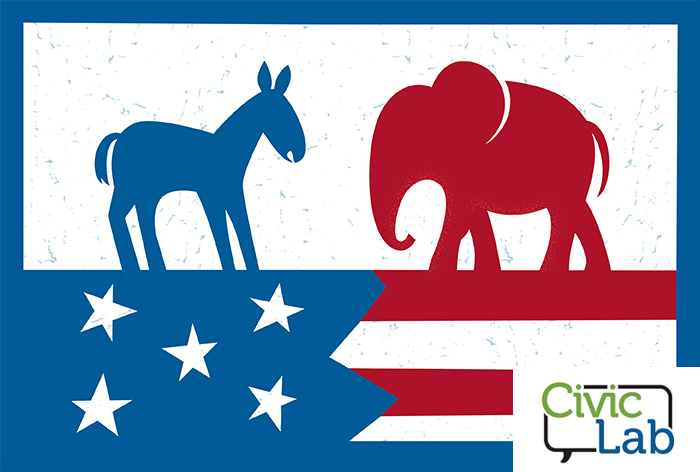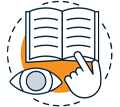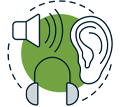Civic Lab Online: The Two-Party Political System
Posted on December 31, 2020 at 6:00 am

About Civic Lab Online
Civic Lab Online provides information on issues facing our community for you to explore. Take a look at thought-provoking materials for teens and adults that allow us to engage in open conversation and grow together as a community. You’ll find all past topics on the Civic Lab Online web page.
What is the two-party political system?
The United States has had a long history with the two-party political system. Our political system has adapted over time, and there are pros and cons to the two-party system we have today.
Fast Facts

How does a two-party system work?
A two-party system is a political system that has two major competing groups representing voters. Usually both groups adopt policies and values that represent a large percentage of their voters in order to gain support. Some countries, such as Canada, have a two-party plus system in which a third party regularly wins some seats in government.
Some examples of two-party political systems include the United States (Republicans and Democrats), Canada (Liberal Party and Conservative Party), Great Britain (Conservative Party and Labor Party), Jamaica (Jamaica Labour Party and People’s National Party), and Zimbabwe (Zimbabwe African National Union-Patriotic Front and Movement for Democratic Change).
The two main parties often include a conservative group, favoring social tradition and limited government, and a liberal group, favoring social reform and a strong central government.
The U.S. uses plurality voting, sometimes called first-past-the-post. This means that a candidate doesn’t have to gain more than half the votes to win an election. Many presidential candidates have lost the popular vote but won via the Electoral College vote (see Civic Lab “What is the electoral college?”). Systems that rely on the popular vote use majority voting.
There is no limit on the number of political parties active in a two-party system. Examples of third parties in the U.S. include the Independent Party, the Green Party, Teddy Roosevelt’s Bull Moose Party, the Libertarian Party, and the Socialist Party.
How did we get our political system? Did the United States always have a two-party system?
The current two-party system in the United States evolved from several other two-party systems. One early example after independence were those who wanted a strong central government (the Federalists) and those who favored more power at the state level (Democratic-Republicans).
Every president after George Washington has been elected by one of the two major parties of their era. Historians disagree on exactly how many times the two parties have shifted in name, supporters, and policies (roughly five or six major shifts), but generally Federalists were replaced by National Republicans, then Whigs, and eventually were rebranded as Republicans. Democratic-Republicans were rebranded as Democrats. Demographics of people who have supported the political parties have changed over time as different issues have become central to the national conversation, including slavery, prohibition, and the New Deal.
Political parties were not formed as part of the United States Constitution. In fact, George Washington warned against forming competing parties. A Republican or Democrat has won the presidency in every election since 1852, and one party or the other has held a controlling presence in every session of Congress since 1856. These two parties attract a large majority of votes in all municipal, state, and federal elections and have done so consistently since the era of the American Civil War (1861–1865).
Why do we have third parties in the United States if they seldom win elections?
Third-party candidates can still play important roles by attracting national attention to a policy or by shifting the pool of voters enough to change election results.
The Socialist Party had major effects on the national conversation around labor laws.
The People’s Party (otherwise known as the Populist Party) motivated Congress to ratify the 16th and 17th Amendments.
In 1912, Theodore Roosevelt ran for president with the Bull Moose Party. Though he didn’t win, he prevented the sitting president, William Taft, from getting enough Republican votes to win reelection. Instead, the Democratic candidate, Woodrow Wilson, won the election.
In the 2000 election, Ralph Nader split Democratic voters, preventing Al Gore from winning against George W. Bush, the Republican candidate.
What are the pros and cons to our system? What other systems are there?
Advantages to the two-party system include simplicity when citizens choose who to vote for and lower chances of an extremist gaining power. In order to gain voters from the widest group of people, parties must have a partisan but relatively moderate platform designed for broad appeal.
Disadvantages to the two-party system include limited choices for voters, voters feeling like they have to choose between the lesser of two evils, or that they are being forced to choose a candidate that doesn’t share all of their values. Parties can also create voter polarization as the two sides try to distinguish themselves from each other, thus reducing voter trust in government.
Proportional representation tends to favor the development of a multiparty system because it ensures representation in the legislature for even small parties. The multiparty system often involves liberal, conservative, and socialist parties as well as other groups. Voters choose between the parties that did best in a first ballot. This leaves small parties at a disadvantage but, nevertheless, gives them opportunity to strengthen their role during the second round of ballots (also known as the two-round system).
Single-party systems may be fascist, communist, or those found in developing countries.
Read. Watch. Listen

Read
Edwards, Mickey. The Parties Versus the People: How to Turn Republicans and Democrats into Americans. Yale University Press, 2013.
As a former congressman, Mickey Edwards witnessed firsthand how important legislative battles can devolve into struggles not over principle but over party advantage. He identifies exactly how our political and governing systems reward intransigence, discourage compromise, and undermine our democracy. He then describes exactly what must be done to banish the negative effects of partisan warfare from our political system.
Klein, Ezra. Why We’re Polarized. New York: Avid Reader’s Press, 2020.
Journalist Ezra Klein reveals how the American political system is polarizing us—and how we are polarizing it—with disastrous results. How do we overcome identity politics and keep our racial, religious, geographic, ideological, and cultural identities from tearing at the bonds that hold this country together?
“Two-Party System.” Gale Opposing Viewpoints Online Collection, Gale, 2020. Gale In Context: Opposing Viewpoints, Accessed 5 Dec. 2020.
This is a brief history of how the two-party system was created, how it works, and the basic pros and cons of how American elections are run.

Watch
American Party Animals. Producer. Jeremy Chilnick. We, The Voters, Vulcan Productions, 2016. https://wethevoters.com/film/american-party-animals.
More young people than ever identify themselves as politically “independent.” This short video, narrated by Morgan Spurlock, looks at pros and cons of our two-party system and at what makes it so hard for third parties to win power.
Party Systems: Crash Course Government and Politics #41. Crash Course Government and Politics, PBS Digital Studios. Dec 11, 2015. https://youtu.be/PkltAl_cO5Y.
Throughout most of U.S. history, our political system has been dominated by a two-party system, but the policies and the groups that support these parties have changed drastically over time. There have been five, arguably six, party systems since the election of John Adams in 1796, so we’ll look at the supporters and policies of each of the parties during these eras and look at how historical contingencies cause these policy shifts. We’ll also talk a bit about the benefit of a third party, which helps to influence political debate although rarely ever wins elections.

Listen
“Episode 91: The Two-Party System.” Civics 101, Corporation for Public Broadcasting, New Hampshire Public Radio, January 18, 2018. https://www.civics101podcast.org/civics-101-episodes/ep91.
There are many political parties in the United States—so how come we pretty much only hear about two? What is the two-party system and why does it hold sway? Is it an intentional part of governmental design, or is this simply how history shook out? In this podcast, we’ll explore these questions, hear from an original member of a third party, and dig into something called Duverger’s Law, which explains why two parties tend to dominate in American politics.
“The future of the two-party system.” Wake Up to Politics, NPR, St. Louis Public Radio, October 5, 2020. https://podcasts.apple.com/us/podcast/the-future-of-the-two-party-system/id1493819122?i=1000474679248
Gabe Fleisher examines the growing number of Americans who no longer are satisfied with either political party and explains why he believes American democracy would be healthier with a few more parties thrown in. Politico’s chief political correspondent, Tim Alberta, will offer insight into third-party candidates in 2020 and share how he sees the two-party system evolving in the coming years—perhaps not with more viable third parties, but with new parties forming inside the current ones.
Digital Resources

Opposing Viewpoints in Context
After accessing Gale in Context: Opposing Viewpoints, search “two-party system” once you are in this resource.
Print & Other Materials in Our Catalog
Search our catalog for books, large print, eBooks, and audiobooks on the topic of “two-party political systems.”
Downloadable Documents
Fast Facts: The Two-Party Political System
Read. Watch. Listen: The Two-Party Political System
Tags: adults, civic lab, government, online, politics
